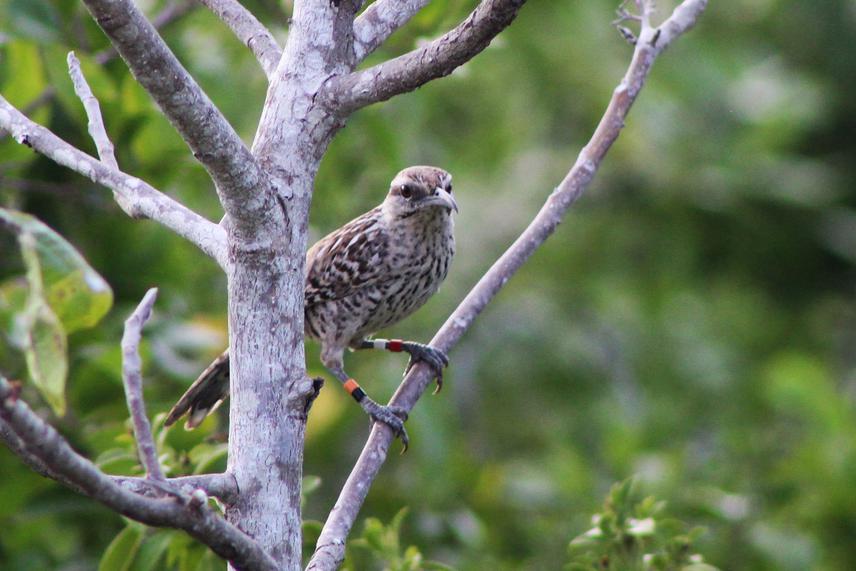Anay Serrano Rodríguez
Other projects
7 May 2015
Evaluating the Fragmentation of Potential Habitat of Campylorhynchus yucatanicus, an Endemic Bird of Yucatan Peninsula for Conservation Aims
12 Aug 2025
Effect of Landscape Configuration on Parental Care and Nest Survival of Campylorhynchus yucatanicus (Troglodytidae): What Should We Do to Improve Coexistence?
The different strategies for the use of natural resources and activities such as livestock and urban development on the coastal littoral, lead to changes in land use at the landscape level in the Yucatan Peninsula. Campylorhynchus yucatanicus is an endemic species and endangered bird (Semarnat) and has a restricted distribution to the spiny coastal scrubland that is found in a strip of narrow coast in the north of the Peninsula. The loss of genetic diversity in populations of C. yucatanicus and the decrease in the flow of individuals and genes between localities could be an effect of the fragmentation processes that are occurring in the peninsula. Our objective is to collect genetic diversity information from the species to estimate and reevaluate the conservation status of their populations.

Yucatecan Wren's individual were captured and ring marker by us and photographed by birdwatchers.
The distribution of Campylorhynchus yucatanicus the more restricted than distribution of other bird species in the Yucatan Peninsula. According to Norma Oficial Mexicana (NOM-059, 2010), C. yucatanicus is an endemic and endangered species, although the IUCN places it in the almost threatened category. The above results suggest that the destruction and fragmentation of habitat by the increasing population development in the coasts and the tourist industry threaten the populations of this bird. This process can affect the connectivity of C. yucatanicus´ populations between fragments of coastal scrub vegetation, causing a decrease in genetic variability of populations and patterns of lower genetic flow. At the population level, habitat fragmentation usually causes a reduction in the size of resident populations and an increase in their isolation. The impact of these changes on populations depends on effective population size (Ne) and migration rates. The modification of these demographic parameters influences the structure and genetic diversity of the populations, which depends on the viability of the species in the long term. Our objective is to collect genetic diversity information from the species to estimate and reevaluate the conservation status of their populations.
Our results will provide information about the diversity and genetic structure of C. yucatanicus´ populations, as a measure of their conservation status. We can relate the values of genetic diversity with a map of landscape fragmentation and estimate the effect of this process. This results is necessary to reevaluate the conservation status of this species and to use this information in management plans within and beyond of protected areas. We believe that the threat level of this species has been undervalued by IUCN, so it is urgent to review and gather information to alert protected area managers and competent authorities.
Fragmentation has been one of the most addressed processes as one of the main threats of species loss. However, it is necessary to quantify and evaluate in each case how it is affecting each population of interest to implement adequate management strategies. We will identify priority areas for the conservation of this species, areas vulnerable to extinction, and areas where habitat management could work, such as corridor design, conservation of native vegetation in Gardens and patios and / or translocation of individuals. Our data will serve as a basis for designing future research on the effect of fragmentation and the health of populations of this important bird species.